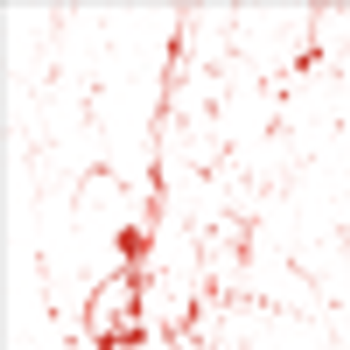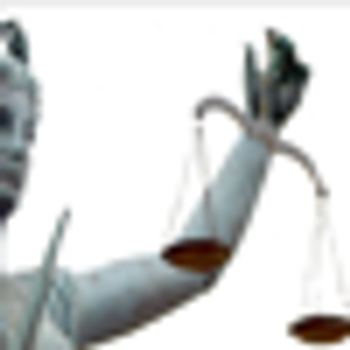
Allen Frances, MD
Articles by Allen Frances, MD


"Psychiatric diagnosis is certainly imperfect -- but so is much of diagnosis throughout medicine. And whatever the current limitations, psychiatric diagnosis is useful and essential. There are no 'paradigm shifts possible til we learn a lot more. To imply otherwise is misleading and confusing to patients."

Education and discussion will be the most powerful ways to mitigate the risks of DSM-5. The more people know about psychiatric diagnosis, the more safe, accurate, and useful it will be.

The British Psychological Society has issued a press release that rivals the silliness of DSM-5 and the National Institute of Mental Health.

The flat out rejection of DSM-5 by National Institute of Mental Health is a sad moment for mental health--and an unsafe one for our patients. The APA and NIMH are both letting us down, failing to be safe custodians for the mental health needs of our country.

The intense level of international interest in DSM-5 is a great surprise. Although DSM has become a research standard around the world, it is rarely used by clinicians outside the US and therefore poses a much lesser threat to their patients. So why all the prominent media coverage in countries outside of the US?

Money should not be wasted on futile preventive programs to detect mental health problems that don't yet exist. Instead, resources should be invested where there is desperate need-to properly treat and decently house psychiatric patients who are now shamefully neglected.

The liveliest debate in psychiatry today is where to draw the line between mental disorder and mental health. So much rides on the decision-who gets treated and how, who pays for it, whether a criminal is deemed mad or bad, whether someone gets damages in tort cases, who qualifies for disability payments and eligibility for extra school services, whether someone can adopt a child-and there's a whole lot more.

The 3% to 5% of kids who are particularly gifted are also at special risk for being tagged with an inappropriate diagnosis of mental disorder. Caution is necessary when diagnosing.

After each violent tragedy, the politicians hypocritically mourn and harrumph, but wind up buckling under pressure from the NRA, fiscal constraints, and the prison and gun lobbies. Repeated dramatic events can shake the complacency and cowardice of a stalemated Congress and state legislatures.

It has moved PFAMC from the back of the book (where it is not a mental disorder) to front and center in the chapter on Somatic Symptom Disorders (where now it will be a mental disorder).

Diagnosing rape as mental disorder is an improper use of psychiatric diagnosis and promotes the abuse of psychiatric commitment to further what would otherwise be an unconstitutional form of preventive detention.

DSM-5 must emphasize that physical symptoms deserve the respect of a thorough work-up before assuming their cause is psychiatric. And people with defined medical illnesses should not be casually mislabeled as also mentally ill just because they are upset about being sick.

The changes in the newly approved DSM-5 loosen diagnosis and threaten to turn our current diagnostic inflation into diagnostic hyperinflation.

The DSM-5 leadership is trying to put a brave face on its badly failed first stage of field testing and has offered no excuse or explanation for canceling its second and most crucial quality control stage. This field testing fiasco erases whatever was left of the credibility of DSM-5 and APA.

A recent article in the New York Times reports that doctors are prescribing stimulant drugs to compensate for the bad schools their child patients have to attend. Rates of ADHD have tripled in the last 15 years-precisely because many kids are being diagnosed with fake ADHD to make them eligible for medications and/or extra school services.

James Dao reports in the New York Times that the military is considering 2 steps to reduce its startling rate of active duty suicides-which is approaching an unacceptable one suicide every day. Both measures are completely sensible, but neither goes nearly far enough.

Improving our kids performance in school won't come from some vague, quixotic psychological fix. It requires they have better lives and better schools and that means us becoming a fairer society.

With understandable urgency, Secretary of Defense Leon Panetta has made suicide one of his top priorities, instructing commanders at all levels to feel acutely accountable for it. The numbers are startling. On average 1 active duty soldier is killing himself each day--twice the number of combat deaths and twice the civilian rate.

Seventy percent of antidepressants are prescribed by primary care doctors with little training in their proper use, under intense pressure from Big Pharma, drug salespeople, and misled patients, after rushed 7-minute appointments and subject to no systematic auditing. The cash-strapped FDA is beholden to industry for funding. And it gets worse.

"Internet Addiction" may soon spread like wildfire. All the elements favoring fad generation are in place . . . the profusion of alarming books; the breathless articles in magazines and newspapers; extensive TV exposure; ubiquitous blogs; the springing up of unproven treatment programs; the availability of millions of potential patients; and an exuberant trumpeting by newly minted "thought leading" researchers and clinicians. So far, DSM-5 has provided the only restraint.

Psychiatry has no way to predict mass murder and no way to prevent it. There is no indication that psychiatry can change the statistics of violence or the proclivity of the violent.

There is no psychiatric solution for mass murder. What are the warning signs? Is there a way to protect victims? What can we do to prevent an awful tragedy from constantly recurring?

Our current diagnostic system is based more on subjective clinical judgments and less biological psychiatry. There is not one way to develop symptoms of schizophrenia or bipolar disorder or autistim or OCD.

Let’s compare Dr Robert Spitzer's apology to the gay community with the stonewalling that has characterized every step in the development of DSM-5. The American Psychiatric Association has a lot to apologize for-but instead maintains a defensive posture that prevents insight and self-correction.

For the first time in its history, DSM-5 has shown some flexibility and capacity to correct itself. Hopefully, this is just the beginning of what will turn out to be a number of other necessary DSM-5 retreats.

An excellent study has killed two birds with one stone. It is a clear caution against the DSM-5 proposal for a psychosis risk syndrome and it should temper enthusiasm for rushing ahead with "ultra high risk" prevention programs.

My experience indicates that the SVP laws are being implemented in a highly arbitrary and idiosyncratic fashion with judges and juries easily confused by misleading expert testimony.

The diagnostic boundary between Major Depressive Disorder and Bipolar II Disorder is one of the most difficult and also one of the most important in psychiatry.

Up until now, the leadership of the American Psychiatric Association has stubbornly defended the indefensible DSM-5 proposal that would turn normal grief into clinical depression. APA has blithely ignored the contrary scientific evidence
